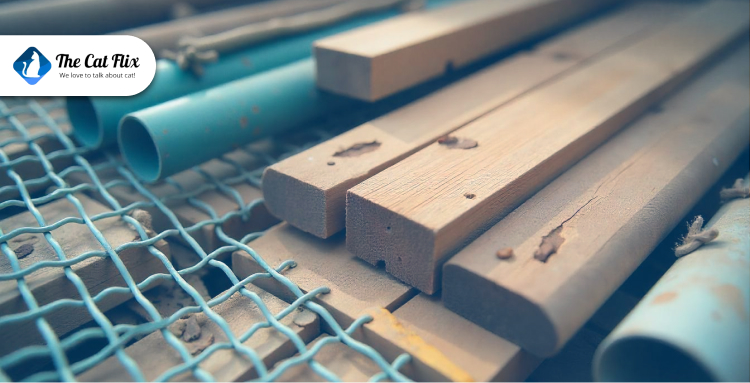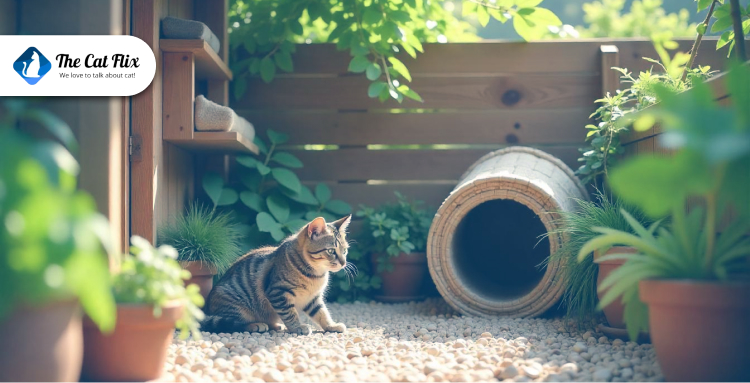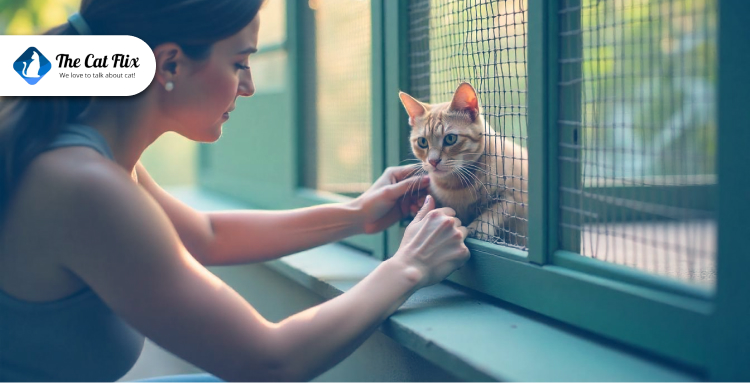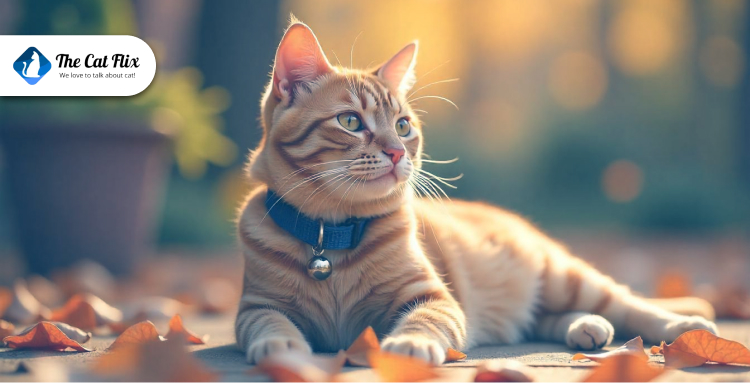Your cat, much like you on a lazy Sunday afternoon, is not truly looking for entertainment. They’re looking for meaning. Or at least, a moth to chase.
Indoor cats, despite their cushy surroundings, aren’t spared from the quiet erosion that comes with monotony. They were born with the instincts of hunters, climbers, curious explorers — but we’ve given them walls, routines, and robot vacuums. Is it any wonder that some start climbing curtains or swatting your ankles as if to say, “Give me purpose, or give me yarn!”?
Luckily, we don’t need expensive gadgets or gimmicks to awaken their inner tiger. Sometimes, the greatest adventures come from the simplest places: a cardboard box, a paper bag, a spot of sunlight drifting across the floor.
Let’s explore how to turn your cat’s boredom into curiosity without paying a fortune or losing another houseplant in the process.
1) Box Office Hits: Why Cardboard Is the Cat’s Meow
Cats, despite their pampered lifestyle and premium kibble, are still hardwired predators. They’re wired to lurk, to leap, to wait in silence until the invisible prey (aka your ankle) makes its fatal move. Cardboard boxes just happen to be the perfect co-conspirators. Enclosed, warm, textured, and delightfully defensible, they scratch an itch your cat didn’t even know they had.
However, this isn’t just some cute quirk; science also backs the box obsession.
“A 2014 study by the University of Utrecht found that shelter cats given access to cardboard boxes exhibited lower stress levels and adapted to their new environments more quickly than cats without boxes.” Source – Journal of Veterinary Behavior, Vol. 9, Issue 6
Translation: a simple box can literally help your cat chill the heck out.
There’s a psychology behind it. The box gives them control, a rare commodity in a world of vacuum monsters and humans who dare to close doors. It’s a hiding place, but also a perch of power. From there, they can observe, strategize, and nap with the smug satisfaction of a creature who has nothing to prove.
The cherry on top? They’re free. Free entertainment. Free therapy. Free stress relief for your floofy little philosopher.
2) The Paper Bag Parade: Simple, Safe, and Super Fun

So why do cats lose their minds over something so plain?
It’s the perfect storm of stimulation, the crackle of paper, the shadowy enclosure, the narrow entrance that feels just dangerous enough. It triggers their inner hunter. Not the full-fledged jungle predator mode, but the sneaky slink through the brush to surprise the toe variety. A paper bag is more than just a place to hide; it also provides an interactive experience.
And if you want to level up? Toss in a pinch of catnip or drop a small crinkly toy inside. You’ll have yourself an instant feline rave party. Glow sticks optional.
Beyond the giggles and photo ops, this kind of spontaneous play is legit good for your cat’s health and your furniture.
“Cats who receive daily interactive play sessions show fewer behavioral issues such as inappropriate scratching, excessive meowing, and nighttime zoomies.” Source – American Society for the Prevention of Cruelty to Animals (ASPCA), Behavioral Guidelines 2022
Consider a paper bag to be your cat’s version of both a fidget spinner and a meditation app. It provides adrenaline without overstimulation. It tires the body just enough and satisfies those instinctual curiosities we too often dismiss.
3) Window to the Wild: Creating a Cat-Friendly Watchtower

For indoor cats, the window is a front-row seat to the greatest show on Earth. No subscriptions required. No buffering. Just raw, unfiltered, high-definition nature.
Birds flitting, squirrels pulling off aerial stunts, wind brushing through trees — it’s the kind of cinematic drama that keeps your cat captivated, tail twitching with anticipation. This daily ritual isn’t random either; it’s instinct. It’s their way of staying engaged with the outside world without ever leaving their sun-drenched throne.
And yes, the science backs up your suspicions: cats are low-key obsessed with birdwatching.
“Indoor cats spend an average of 4+ hours each day engaged in visual monitoring of outdoor wildlife, especially birds and small mammals.” Source – Journal of Feline Medicine and Surgery, 2022
For the pièce de résistance? Install a bird feeder just outside the window.
Voilà: Bird TV, now streaming 24/7.
Don’t worry, your cat knows the birds are out of reach. They’re not frustrated. They’re fascinated. Watching, studying, calculating. It’s mental gymnastics for a creature whose ancestors survived by stalking.
Plus, this kind of passive stimulation reduces boredom-driven behaviors and promotes calmness throughout the day. Think of it like a nature documentary narrated by David Meow-tenborough.
4) Feed the Mind, Not Just the Belly: DIY Puzzle Feeders

In the wild (or your backyard, if you’ve got rogue alley cats), food isn’t served — it’s earned. Stalk, pounce, capture. That’s the natural order. So when we hand-feed our feline friends the same kibble day after day without a challenge? We’re skipping their favorite part: the hunt.
These puzzle feeders turn dinner into a mission. A treasure hunt. A puzzle worth solving. And the benefits? They’re more than just mental.
“59.5% of cats in the U.S. are overweight or obese.” Source – Association for Pet Obesity Prevention, 2022
That’s not just a cosmetic issue. Obesity in cats is linked to diabetes, arthritis, and a shortened lifespan. Puzzle feeders slow eating, trigger problem-solving, and encourage movement — all of which help keep that waistline in check.
And you don’t need to buy anything fancy. You can DIY your way to feline enrichment glory.
- Toilet paper rolls: Fold in the ends, cut some holes in the sides, toss in treats — instant food puzzle.
- Egg cartons: Fill the pockets with dry food and let them work their paws and brain to scoop it out.
- Muffin tins + ping pong balls: Drop kibble into the cups, cover some with lightweight balls — it turns snacktime into a strategic game of bob-and-weave.
These low-cost creations mimic the search-and-reward cycle cats are evolutionarily wired for. They don’t just eat — they earn it. And trust me, the tail wiggle when they solve the puzzle is pure gold.
5) The Blanket Beast Rises: Tap Into Hunting Instincts

You know that moment when you wiggle your fingers under the blanket and suddenly your sweet, purring fluffball becomes a savage predator from the wilds of the couch? Yeah — that’s not just adorable chaos. That’s biology in motion.
This classic game — Blanket Beast, as we like to call it — is a low-tech, high-thrill way to light up your cat’s primal instincts. Just your hand (safely tucked away) and a blanket, sheet, or pillow fort. The moment that mysterious “creature” starts moving beneath the fabric, your cat’s pupils widen, their butt does that little pre-launch wiggle, and nature takes over.
Why does this work so well? Because it mirrors the real deal. In the wild, prey doesn’t stand around waving hello. It hides, scuttles, and flinches. Your sneaky fingers under the blanket? That’s mouse energy. That’s target acquired.
And it’s not just fun. It’s therapeutic.
“Just 15 minutes of active play per day can significantly reduce feline anxiety and destructive behaviors.” Source – PetMD, 2023 Feline Wellness Guide
That short burst of stalking, pouncing, and high-speed tail flicking helps burn off pent-up energy and stress. For indoor cats especially, this kind of engagement is crucial. It prevents the buildup of boredom — that sneaky villain behind furniture shredding and 3 a.m. zoomies.
Plus, this game creates a bond. It’s a shared ritual — you bring the movement, they bring the murder mittens. Everybody wins (well, except your fingers, if you get too bold).
Take a look at these posts for more creative cat entertainment tips:
- How to Move Cross-Country with Your Cat: A Stress-Free Plan
- How to Rotate Cat Toys to Keep Your Feline Engaged
- 7 Best Remote Control Cat Toy In 2024
6) Lights, Lasers, Action— Low-Cost Ways to Trigger the Chase
Lasers may be the crowd favorite, but they’re not your only weapon in the war against boredom. Flashlights, shiny keychains, mirrors catching the sun — all of these can become thrilling stand-ins for pricey red dots.
Have a smartphone? Turn on the flashlight and wiggle it along the wall. Have a window? Let sunlight bounce off your watch face and turn the living room into a feline rave. This is improvisation at its finest. Your cat doesn’t care if the source is high-tech or low-budget — if it moves, it’s prey.
However, the only rule of respectful light play is to let them win.
A constantly uncatchable light can lead to frustration or even anxiety. So after a few sprints and leaps, switch gears. Toss in a real toy — something they can pounce on, bite, and bunny-kick into oblivion. Let the hunter triumph. Give them the glory they deserve.
“High-energy cats benefit most from 20 to 30 minutes of vigorous play each day to stay physically and mentally healthy.” Source – VCA Animal Hospitals, Feline Exercise Guidelines 2023
Every playful pounce burns energy, sharpens instincts, and eases tension. It’s cardio with a purpose — not to mention a solid distraction from nibbling your plants or unrolling your toilet paper (again).
The Catflix & Thrill: Why Variety (Not Replays) Keeps Cats Tuned In
If you’ve ever observed your cat walk past a toy they once cherished, you’ve witnessed the age-old feline condition known as toy fatigue.
Cats are pattern recognizers. It’s part of their evolutionary makeup — the same skill that helped them memorize mouse paths in tall grass or track a bird’s rhythm across branches. But the flip side? Once they crack the pattern, they get bored. Fast.
“Cats can get bored of the same toy or activity within just 3 to 4 days.” – Scientific American, 2023
So if you’re leaving the same three toys on the floor for weeks and wondering why your cat’s more interested in chewing your phone charger — it’s not them, it’s the routine.
That’s right. Your cat, discerning viewer of all things entertaining, craves fresh content. They want Catflix Originals, not tired reruns.
The fix? Toy rotation. Think of it like wardrobe changes but for playtime. Hide most of the toys away and only leave a couple out at a time. Then, every 3–4 days, swap them out. Reintroduce “old” toys as if they’re brand new and watch your cat fall in love all over again.
Try a Weekly Toy Schedule:
- Monday–Wednesday: Wand toys and soft plushies
- Thursday–Friday: Puzzle feeders and ping-pong balls
- Saturday–Sunday: Paper bag parade or flashlight chase
Rotating toys gives their environment a sense of novelty — the same way we crave a new book, a new show, or a different view. Cats aren’t lazy. They’re selective.
So, next time your cat looks bored, remember: it’s not them. They’re just waiting for the next episode to drop.
Ready to direct your cat’s own Catflix lineup? Start your toy rotation today and turn boredom into box-office bliss.

